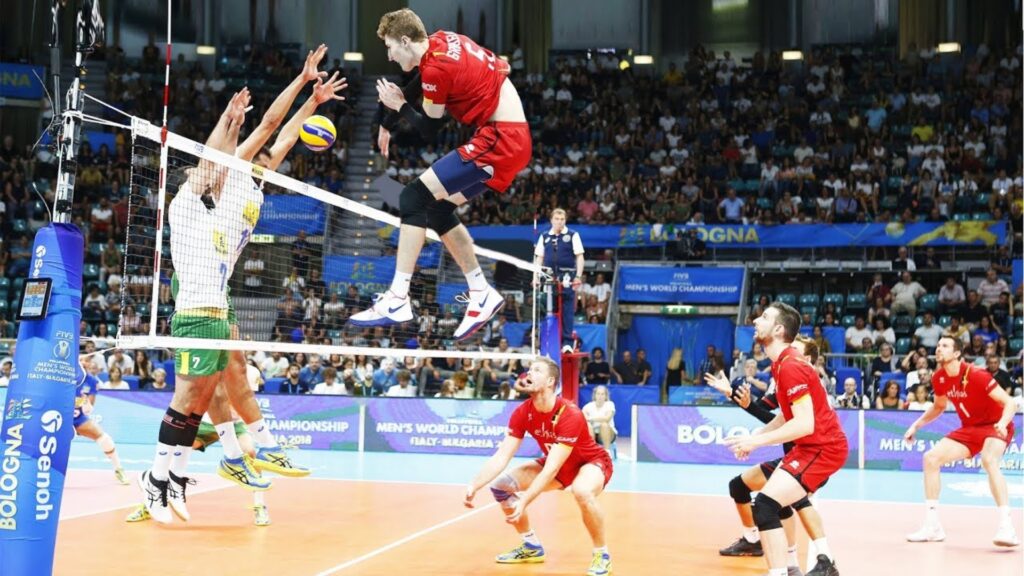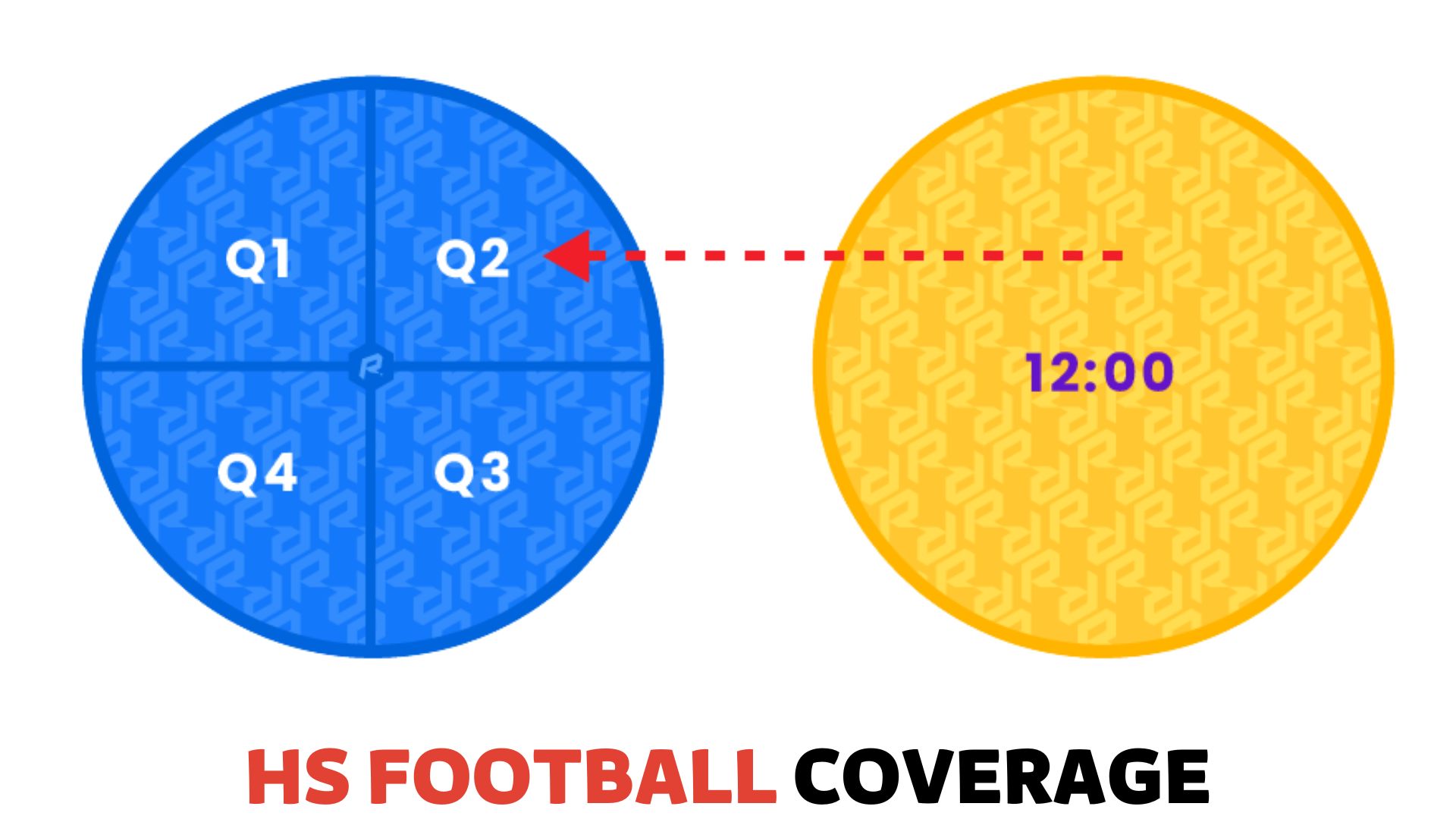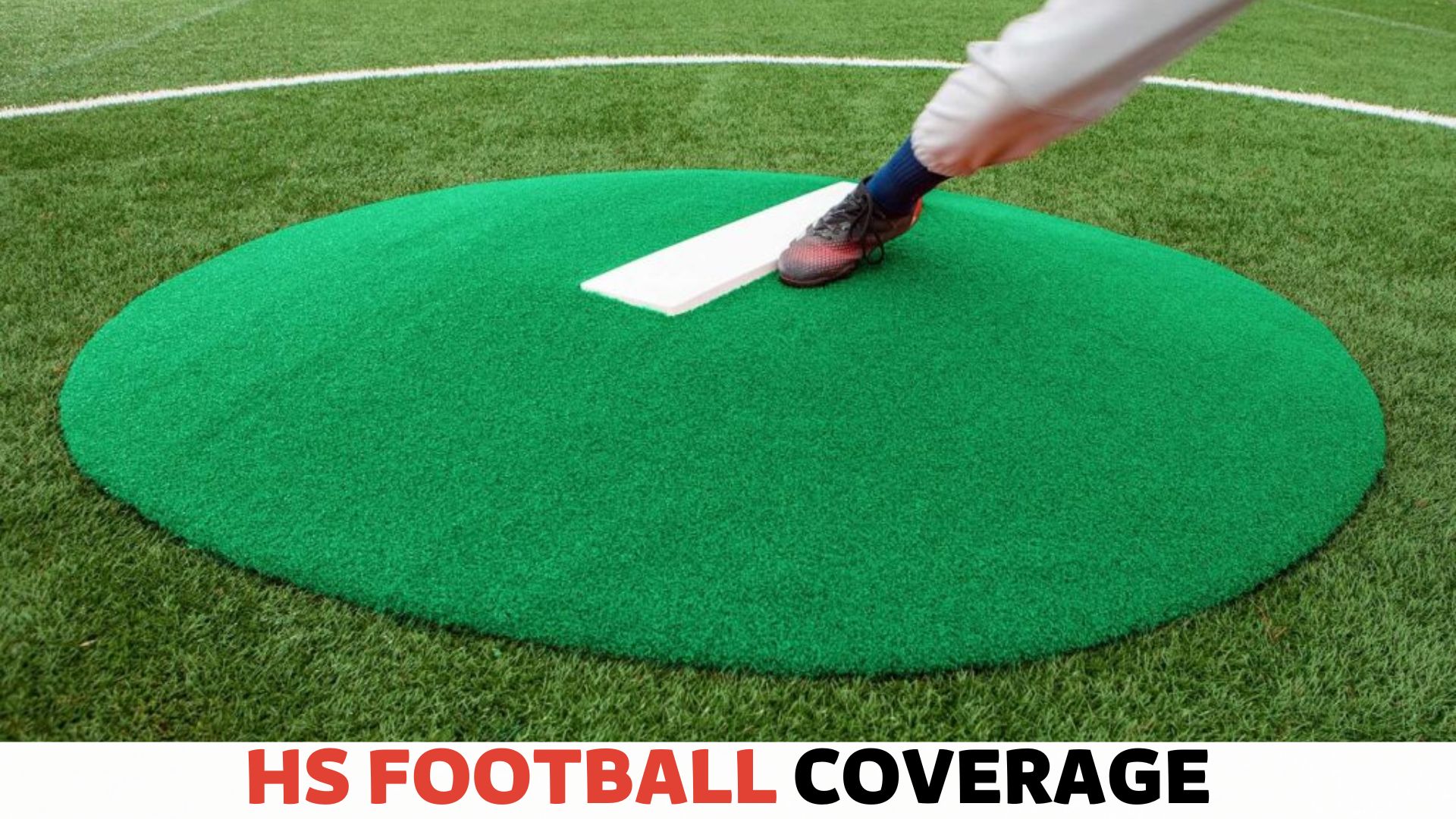
To jump higher in volleyball at home, focus on exercises that strengthen your leg muscles, such as squats and lunges. These exercises can be easily done in the comfort of your home and will help improve your vertical jump for volleyball.
Strengthen Your Lower Body
Learn how to improve your vertical jump for volleyball right in the comfort of your own home. Strengthen your lower body with these effective exercises and gain the power to jump higher and spike confidently on the court.
Squats and Lunges: Essential Exercises for Leg Strength

Squats and lunges are two of the most effective exercises for strengthening your lower body and improving your jumping ability in volleyball.
These compound movements target multiple leg muscles, including quadriceps, hamstrings, glutes, and calves.
By incorporating squats and lunges into your at-home training routine, you can build the necessary leg strength to jump higher and maximize your performance on the court.
Calf Raises: Building Calf Muscles for Explosive Jumps
Calf raises are designed to target and strengthen your calf muscles, which are crucial in generating explosive power during jumps.
To perform this exercise, stand with your feet hip-width apart, rise onto your toes, and slowly lower yourself back down.
Repeat this movement for several sets and gradually increase the number of repetitions as your calf muscles strengthen.
By regularly incorporating calf raises into your training routine, you can develop the necessary calf strength and power needed for higher jumps on the volleyball court.
Plyometric Exercises: Incorporating Jump Training Into Your Routine
Plyometric exercises are a valuable addition to any volleyball player’s training regimen, focusing on explosive movements that mimic the demands of jumping on the court.
Incorporating box, squat, and tuck jumps into your at-home routine can improve your power, speed, and coordination.
These exercises incorporate controlled landings and quick take-offs, helping to develop the fast-twitch muscle fibers responsible for explosive movements.
By gradually increasing the intensity and difficulty of your plyometric exercises, you can enhance your jumping ability and reach new heights in volleyball.
Improve Your Jump Technique
When it comes to volleyball, having a strong vertical jump is essential for spiking, blocking, and reaching those hard-to-reach balls.
If you’re looking to improve your jump height at home, one key area to focus on is your jump technique.
By fine-tuning your arm swing, body positioning, and landing technique, you can maximize your momentum, achieve the ideal take-off position, and reduce the impact on your body.
Here are some tips to help you improve your jump technique and soar to new heights on the volleyball court.
Focus on Arm Swing: Maximizing Momentum for Higher Jumps
When generating power for your jump, your arm swing plays a crucial role. To maximize your momentum and propel yourself higher, paying attention to your arm action is important. Here are a few key points to keep in mind:
- Start with your arms relaxed and slightly bent at the elbows.
- As you crouch down to prepare for the jump, swing your arms backward.
- As you explode upward, swing your arms forward and upward, keeping them parallel.
- Extend your arms fully as you reach the peak of your jump, and then quickly bring them down as you prepare to land.
Proper Body Positioning: Achieving the Ideal Take-off Position
The right body positioning is crucial for achieving the ideal take-off position and maximizing your jump height. Here are a few tips to help you with your body positioning:
- Stand with your feet shoulder-width apart, with your toes pointing slightly outward.
- Bend your knees and crouch down into a deep squat, keeping your back straight and your chest up.
- As you explode upward, push off with the balls of your feet, driving your body upward and forward.
- Engage your core muscles to maintain stability and control throughout your jump.
Landing Technique: Reducing Impact and Preventing Injuries
How you land after a jump can significantly impact your overall performance and reduce the risk of injuries. Here are a few important points to remember about landing technique:
- Keep your knees slightly bent to absorb the impact as you land.
- Try to land on the balls of your feet, rolling through to your heels.
- Keep your legs shoulder-width apart for better balance and stability.
- Lower your body gradually, using your leg muscles to control the descent.
Focusing on your arm swing, body positioning, and landing technique can improve your jump technique and help you reach new heights on the volleyball court.
Practice these key elements consistently, and you’ll be amazed at the progress you can make in your jump height.
Enhance Your Core Stability
Enhancing your core stability is crucial for improving your vertical jump in volleyball. A strong and stable core helps you generate power for your jump and improves your balance and coordination.
This section will explore three key exercises—planks and side planks, Russian twists, and stability ball exercises—that will target your core muscles and help you jump higher in volleyball.
H3planks and Side Planks: Strengthening Your Core Muscles/h3
Planks and side planks are simple yet highly effective exercises that strengthen your core muscles, including your abdominals, obliques, and lower back. To perform a proper plank, follow these steps:
- Start by lying face down on the floor, resting on your forearms and toes.
- Elevate your body, keeping it straight from your head to your heels.
- Engage your core muscles by pulling your navel in towards your spine.
- Hold this position for as long as possible while maintaining the proper form.
Side planks target your obliques and provide additional stability benefits. To perform a side plank:
- Lie on your side, propping yourself up on one forearm.
- Elevate your hips off the floor, creating a straight line from your head to your feet.
- Engage your core by tightening your abdominal muscles.
- Hold this position for as long as possible while maintaining the proper form, then switch to the other side.
H3russian Twists: Developing Rotational Power/h3
Russian twists are excellent for developing rotational power in your core, essential for generating explosive movements in volleyball. Follow these steps to perform Russian twists:
- Sit on the floor with your knees bent and feet elevated off the ground.
- Hold a medicine ball or a weight plate in front of your chest, keeping your arms extended.
- Engage your core muscles and lean back slightly to engage the abdominals.
- Slowly twist your torso to one side, bringing the weight towards the floor.
- Return to the starting position and repeat on the other side.
- Perform the exercise for the desired number of repetitions, focusing on controlled, smooth movements.
H3stability Ball Exercises: Engaging Your Core for Improved Balance/h3
Stability ball exercises are effective for engaging your core muscles and improving your balance, which directly impact your jumping ability in volleyball. Here are two stability ball exercises you can try:
- Stability ball crunches: Sit on a stability ball with your feet flat on the floor.
- Walk your feet forward, allowing the ball to roll until your lower back is resting on the ball.
- Place your hands behind your head and perform crunches, engaging your core as you lift your upper body towards your knees.
- Stability ball bridges: Lie on your back with your feet resting on a stability ball.
- Place your arms out to the sides for support.
- Lift your hips off the ground, keeping your core engaged and creating a straight line from your knees to your shoulders.
- Hold this position for a few seconds, then slowly lower your hips back down.
Adding these core-strengthening exercises to your volleyball training routine will help you enhance your core stability, improve your balance, and ultimately jump higher on the court.
Remember to maintain proper form and gradually increase the intensity of these exercises over time for optimal results.
Increase Flexibility and Mobility
Increase your flexibility and mobility with these simple exercises to help you jump higher in volleyball, all from the comfort of your home. Start boosting your vertical jump and take your game to the next level.
One key factor to achieving higher performance in volleyball is increasing flexibility and mobility.
Improving these aspects of your physical fitness helps you execute explosive movements more effectively and enhances your overall performance on the court.
This section will explore three effective methods for increasing flexibility and mobility: dynamic stretching, foam rolling, and yoga or pilates.
Dynamic Stretching: Preparing Your Muscles for Explosive Movements
Before engaging in any intense physical activity, it is important to warm up your muscles properly. Dynamic stretching is a warm-up type involving active movements rather than holding static positions.
This helps increase blood flow to the muscles, improving their flexibility and range of motion. Dynamic stretching before volleyball practice or a game can help you jump higher and prevent injuries.
During dynamic stretching, focus on the muscles used for jumping. This includes your leg muscles, such as quadriceps, hamstrings, calves, and glutes, as well as your hip flexors and lower back.
Incorporate exercises like walking lunges, high knees, leg swings, and hip circles into your warm-up routine. Perform each exercise for 10-15 reps on each side or as necessary.
Foam Rolling: Relieving Muscle Tension and Improving Range of Motion
Foam rolling, also known as self-myofascial release, is another effective way to increase flexibility and improve mobility.
This technique involves using a foam roller to apply pressure to specific areas of your body, releasing muscle tightness and promoting a better range of motion.
By targeting trigger points and breaking up knots in your muscles, foam rolling can significantly enhance your jumping ability in volleyball.
To foam roll effectively, focus on the major muscle groups involved in jumping, such as your quadriceps, hamstrings, calves, and glutes.
Roll slowly and gradually over each muscle group, pausing on any tender spots or trigger points.
Apply gentle pressure and aim for 30 seconds to a minute of rolling per muscle group. Remember to breathe deeply and relax during each roll.
Yoga or Pilates: Enhancing Flexibility and Body Control
Yoga and Pilates are excellent practices for improving flexibility, body control, and overall mobility.
By incorporating either of these disciplines into your training routine, you can develop stronger muscles, better posture, and increased range of motion, all of which contribute to better volleyball jumps.
In yoga, focus on poses that stretch and strengthen your legs, hips, and core. Poses like downward dog, warrior poses, and pigeon poses can help improve your flexibility and increase your ability to jump higher.
Pilates, on the other hand, focuses on core strength and stability. Strong core muscles are essential for generating power in your jumps, so incorporating Pilates exercises like the hundred, leg circles, and roll-ups can greatly benefit your jumping ability.
Implementing these methods into your training routine can effectively increase your flexibility and mobility, ultimately helping you jump higher in volleyball.
Remember to stay consistent with your practice and listen to your body, gradually increasing your intensity and challenging yourself as you progress.
Train Your Explosive Power
Resistance Band Exercises: Adding Resistance to Your Jumps
Incorporating resistance band exercises into your training routine can greatly increase your explosive power for volleyball jumps.
Resistance bands are inexpensive, portable, and versatile tools that can help you strengthen your leg muscles, improve your vertical leap, and enhance your overall jumping ability.
Here are a few resistance band exercises you can try at home:
- Squat Jumps with Resistance Band: Place a resistance band above your knees and assume a squat position. Explosively jump as high as possible while maintaining proper form. The resistance band will challenge your muscles throughout the movement, improving your leg strength and power.
- Lateral Band Walks: Wrap a resistance band around your ankles and stand with your feet hip-width apart. Take a few steps to the side, maintaining tension in the band. This exercise targets your glutes, hips, and thighs, crucial for generating power during jumps.
- Single-Leg Resistance Band Calf Raises: Attach a resistance band to a sturdy anchor point and loop it around the balls of your feet. Balance on one leg and perform calf raises, pushing against the band’s resistance. This exercise targets your calf muscles, aiding in explosive jump power.
Box Jumps: Building Explosive Leg Power
Box jumps are excellent for developing explosive leg power and mimicking the jumping motion required in volleyball.
Utilizing a sturdy box or platform of varying heights can challenge your muscles and improve your ability to generate maximum force quickly. Here’s how to perform box jumps effectively:
- Stand in front of the box with your feet shoulder-width apart, slightly bending your knees.
- Engage your core, swing your arms backward, and explosively jump onto the box, driving your knees upward.
- Land softly with both feet on the box, ensuring full body control throughout the movement.
- Step down carefully and repeat the exercise for the desired number of repetitions.
Gradually increase the height of the box as you become more comfortable and proficient with the exercise.
Box jumps effectively improve your jumping technique, strengthen your leg muscles, and boost your overall power during volleyball games.
Depth Jumps: Enhancing Reactive Strength and Quickness
Another valuable exercise to include in your at-home training regimen is the depth jump. This plyometric exercise helps enhance your reactive strength and quickness, which is crucial for explosive jumps in volleyball. Follow these steps to perform depth jumps safely and effectively:
- Stand on a sturdy platform or box that is approximately knee height.
- Step off the box, and as soon as your feet touch the ground, they spring upward into a vertical jump.
- Land softly and absorb the impact before repeating the exercise.
Depth jumps teach your muscles to contract, enabling you to generate more power and improve your jumping ability rapidly.
Incorporating these exercises into your training routine can increase your explosive power, elevate your volleyball game, and reach new heights with your jumps.
Conclusion
Incorporating these exercises and techniques into your daily routine will greatly enhance your vertical jump in volleyball.
You can jump higher and reach new heights in your game by developing explosive strength, improving flexibility, and honing your jumping technique.
Remember to stay committed and consistent, as progress may take time. With practice and determination, you can achieve your goal of jumping higher in volleyball, whether you’re on the court or at home. So get started today and start reaching for the sky!















